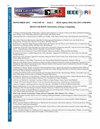Digital Twin Implementation for an Additive Manufacturing Robotic Cell based on the ISO 23247 Standard
IF 1.3
4区 工程技术
Q3 COMPUTER SCIENCE, INFORMATION SYSTEMS
引用次数: 0
Abstract
Recent developments in the field of Additive Manufacturing have been improving the capabilities of the technique not only to be able to build complex geometry parts layer by layer with different materials, but also including the so-called Industry 4.0 technologies, namely Internet of Things (IoT), big data (BD) and Digital Twins (DT). The combination of these technologies with Additive Manufacturing allows online process monitoring and simulation, along with the cloud storage of the process and geometry data collected during the material deposition. The analysis of such data allows online and post-deposition identification of eventual process instabilities that can lead to quality problems. Considering the above-mentioned concepts, this work presents a DT architecture based on the ISO 23247-Digital Twin Framework for Manufacturing standard. In this sense, an approach of a Digital Twin framework for metal additive manufacturing process in a robotic cell composed of a robotic arm, positioning table and welding machine is presented and validated, focusing on the collection and cloud storage of both geometrical and process data along with near real-time process simulation.基于 ISO 23247 标准的增材制造机器人单元的数字孪生实施
增材制造领域的最新发展一直在提高该技术的能力,不仅能够使用不同材料逐层制造复杂几何形状的零件,还包括所谓的工业 4.0 技术,即物联网 (IoT)、大数据 (BD) 和数字双胞胎 (DT)。将这些技术与快速成型制造技术相结合,可实现在线过程监控和模拟,并对材料沉积过程中收集的过程和几何数据进行云存储。通过对这些数据的分析,可以在线和在沉积后识别可能导致质量问题的最终工艺不稳定性。考虑到上述概念,这项工作提出了一种基于 ISO 23247 制造标准数字孪生框架的 DT 架构。从这个意义上讲,本文介绍并验证了在由机械臂、定位台和焊接机组成的机器人单元中进行金属快速成型制造过程的数字孪生框架方法,重点关注几何数据和过程数据的收集和云存储,以及近实时过程模拟。
本文章由计算机程序翻译,如有差异,请以英文原文为准。
求助全文
约1分钟内获得全文
求助全文
来源期刊

IEEE Latin America Transactions
COMPUTER SCIENCE, INFORMATION SYSTEMS-ENGINEERING, ELECTRICAL & ELECTRONIC
CiteScore
3.50
自引率
7.70%
发文量
192
审稿时长
3-8 weeks
期刊介绍:
IEEE Latin America Transactions (IEEE LATAM) is an interdisciplinary journal focused on the dissemination of original and quality research papers / review articles in Spanish and Portuguese of emerging topics in three main areas: Computing, Electric Energy and Electronics. Some of the sub-areas of the journal are, but not limited to: Automatic control, communications, instrumentation, artificial intelligence, power and industrial electronics, fault diagnosis and detection, transportation electrification, internet of things, electrical machines, circuits and systems, biomedicine and biomedical / haptic applications, secure communications, robotics, sensors and actuators, computer networks, smart grids, among others.
 求助内容:
求助内容: 应助结果提醒方式:
应助结果提醒方式:


